SaaS Customer Retention: Strategies, Examples and Tools
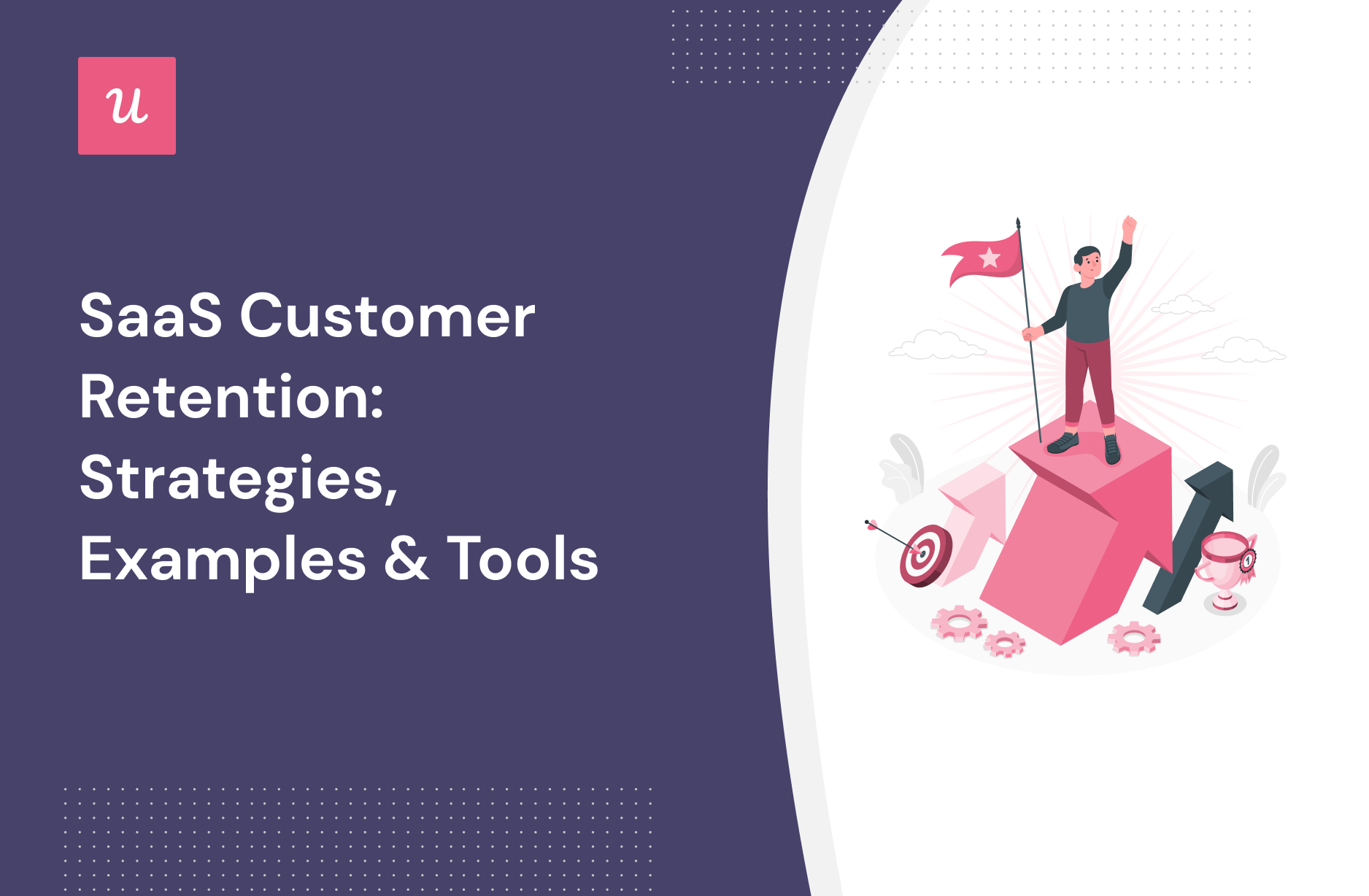
Are you looking to enhance your SaaS customer retention rates and keep your business thriving?
In a nutshell, it comes down to two key steps: investing in top-notch customer retention software to boost user engagement and combat churn, and adopting a comprehensive array of customer retention strategies and tactics.
But, of course, there’s more to the story than that.
If you’re eager to dive deeper into the world of customer retention, keep reading for a detailed guide on how to achieve lasting success.
TL;DR
- In SaaS, retention is the sum of all activities a business undertakes to keep its users.
- Focusing on retention – that is, keeping your current customers for longer – can have a disproportionate impact on your revenue compared to new customers acquired.
- The best ways to promote customer retention differ depending on the stage of development your SaaS is at.
- There are many different ways of tracking customer retention rates, each of which can provide you with different insights.
- Our top customer retention strategies would be: provide self-serve support, use secondary onboarding to keep successful customers engaged, carry out in-app exit surveys, collect and act on user feedback – and let them know you’re acting on it, upsell proactively and in context, gamify activities to drive repeat engagement, and A/B test everything!
- Best customer retention software tool to build in-app messaging flows to increase customer retention – Userpilot.
![]()
Try Userpilot and Take Your Retention to the Next Level

What is customer retention?
In SaaS, customer retention is the sum of all activities a business undertakes to keep its users and to make its existing customers more profitable.
The results of that work are often expressed and reported in the percentage rate of customers retained over total customers for a given period of time – or “customer retention rate“.
How to measure customer retention?
Why is SaaS customer retention important?
Winning new customers is exciting, but customer retention is where SaaS companies actually make money.
Consider these benefits:
- Customer retention is crucial for the health of a SaaS business because it increases customer lifetime value.
- Retaining customers is more cost-effective than acquiring new ones, with acquisition costs being significantly higher.
- High customer retention leads to benefits such as repeat purchases, referrals, and valuable customer feedback, and it can be achieved by prioritizing customer satisfaction, building strong relationships, offering excellent customer support, continuous innovation, transparency, and effective communication.
When to focus on customer retention?
You should always be focusing on trying to retain customers!
But that means different things at different stages in your business’s development.
Early-stage SaaS
At this point, you probably won’t have solid benchmarks for successful customer LTV or a consistent CAC.
So it’s key to start establishing these:
- Making sure that new users go through primary onboarding as quickly as possible.
- That they experience value fast (ie that they Activate with a minimal Time To First Value).
- They come back after their first visit.
- And by comparing acquisition campaigns and channels against early churn – to see where “good” and “bad” users are coming from.
Growth stage SaaS
Once you’re in the growth stage, you’ll have those benchmarks and you’ll be able to compare different segments and cohorts of users against them.
Now your priority is making sure that users continue to realize value by repeated use of your app:
- By driving new feature adoption, to add sources of value.
- Making it easy for teams to onboard new members to their specific use cases.
- Looking for opportunities for customer expansion (upsells, cross-sells, etc) that will benefit those users.
- Cross-referencing performance against KPIs between segments and cohorts, to hypothesize what the characteristics of your most loyal customers are and of those that you’re losing early – so as to bring in more or the former and improve the experience for the latter.
Maturity stage SaaS
At this point, customer retention also needs to focus on keeping hold of your long-term users – the power users whose workflows make regular use of your tool; and the advocates who will refer you to friends and colleagues:
- By collecting customer feedback from these users and incorporating it into product roadmaps.
- Providing advanced one-on-one or webinar training sessions.
- Adding new features that can provide new ongoing sources of value.
How do you measure customer retention?
“What gets measured gets managed,” said management guru Peter Drucker.
And the best customer retention factors to keep track of will depend very much on the specifics of your business.
If you have a high-ticket product that quickly recoups CAC, you might be inclined not to worry about customer loyalty. But if it’s also really tough and expensive to win new users, you might have a different perspective!
There is no one customer retention metric that can tell you everything you might need to know. The best KPIs for your business depend very much on your goals (growth, profitability, maximizing average revenue per user, etc) – and it’s almost always going to be sensible to look at a variety of customer retention metrics.
Important SaaS retention metrics for SaaS
We’ve written about this in much more depth before, but as this is the Ultimate Guide, we’ll go back over the most important ones here.
Customer Retention Rate
Your customer retention rate is the percentage of users you manage to keep over a given period of time. It matters because it gives insight into how users feel about renewing their subscription to your service.
We’ve already looked at this metric at the beginning of the blog, but here it is again:
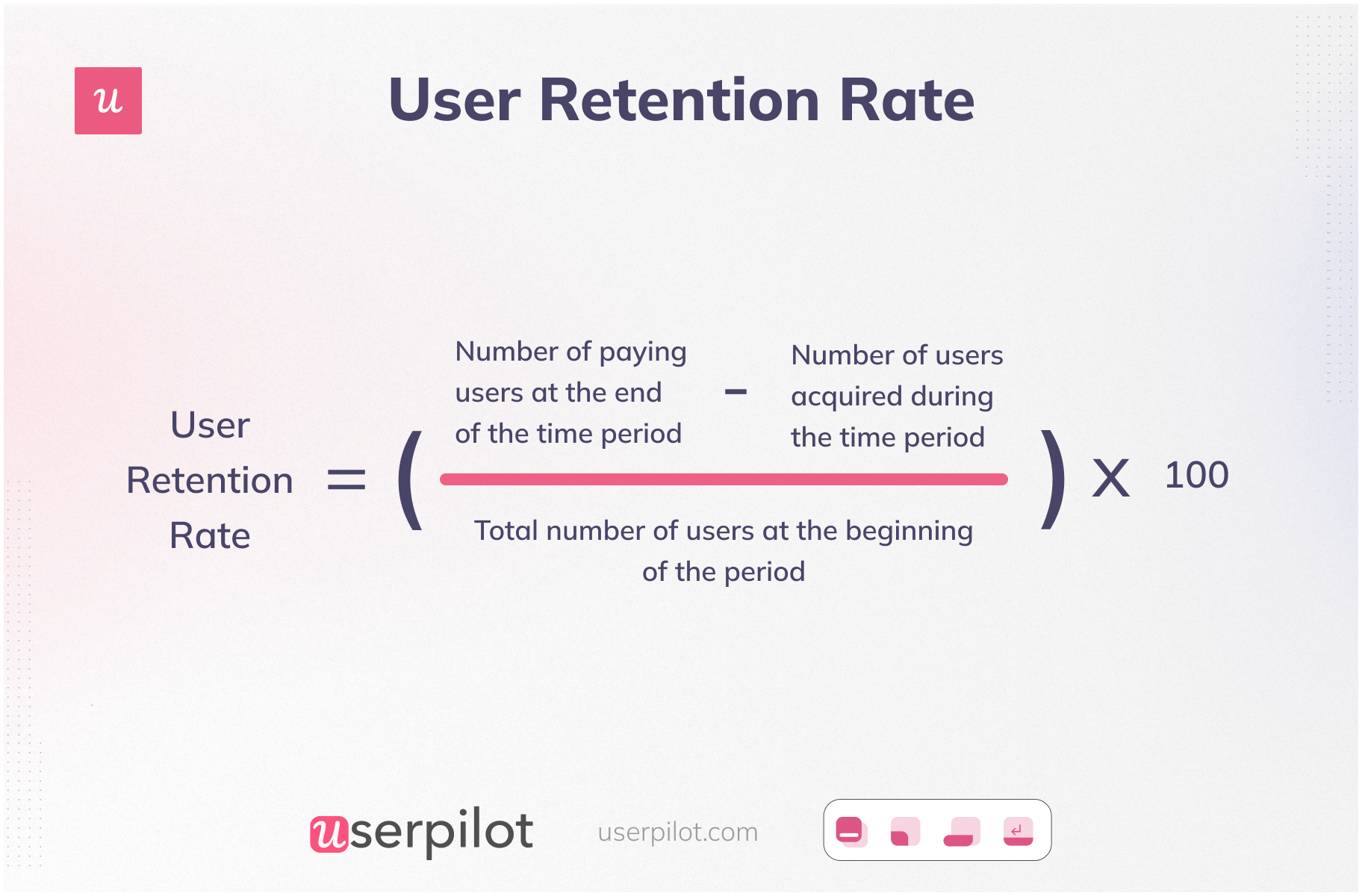
That is:
Customer Retention Rate (%) = ( # paid users at end of time period – # acquired users during the time period/ # paid users at start of time period) x 100
Customer acquisition cost
Customer Acquisition Cost (CAC) is the average amount of money spent to acquire new customers. In SaaS, it’s relevant only to customer acquisition costs for paying customers.
CAC is your total sales and marketing expenses divided by the number of new customers acquired.
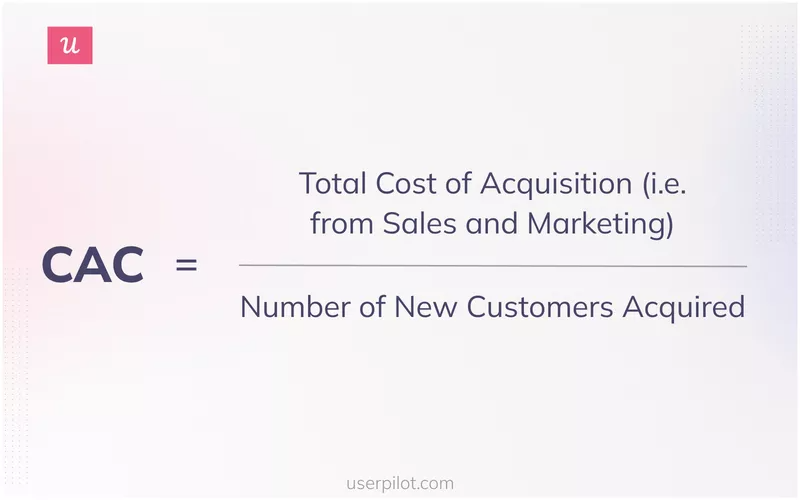
CAC allows you to keep you to make important budgeting decisions and understand what strategies would bring in the best results at minimum cost.
You can use the LTV: CAC ratio to understand the profitability of a customer and how efficiently you’re achieving it. For example, a ratio is 1:1 means that the customer is generating the same amount that you spent on gaining them.
Customer acquisition cost (CAC) = Total Cost of Acquisition/ Number of New Customers Acquired
Customer churn rate
The customer churn rate is the inverse of the retention rate. It looks at the percentage of customers lost over a period.
Once you understand how many customers are giving up on your app, you can start devising strategies for making sure they experience more value, faster that will stop them from churning.
Knowing when customers are leaving is the first step to understanding why.
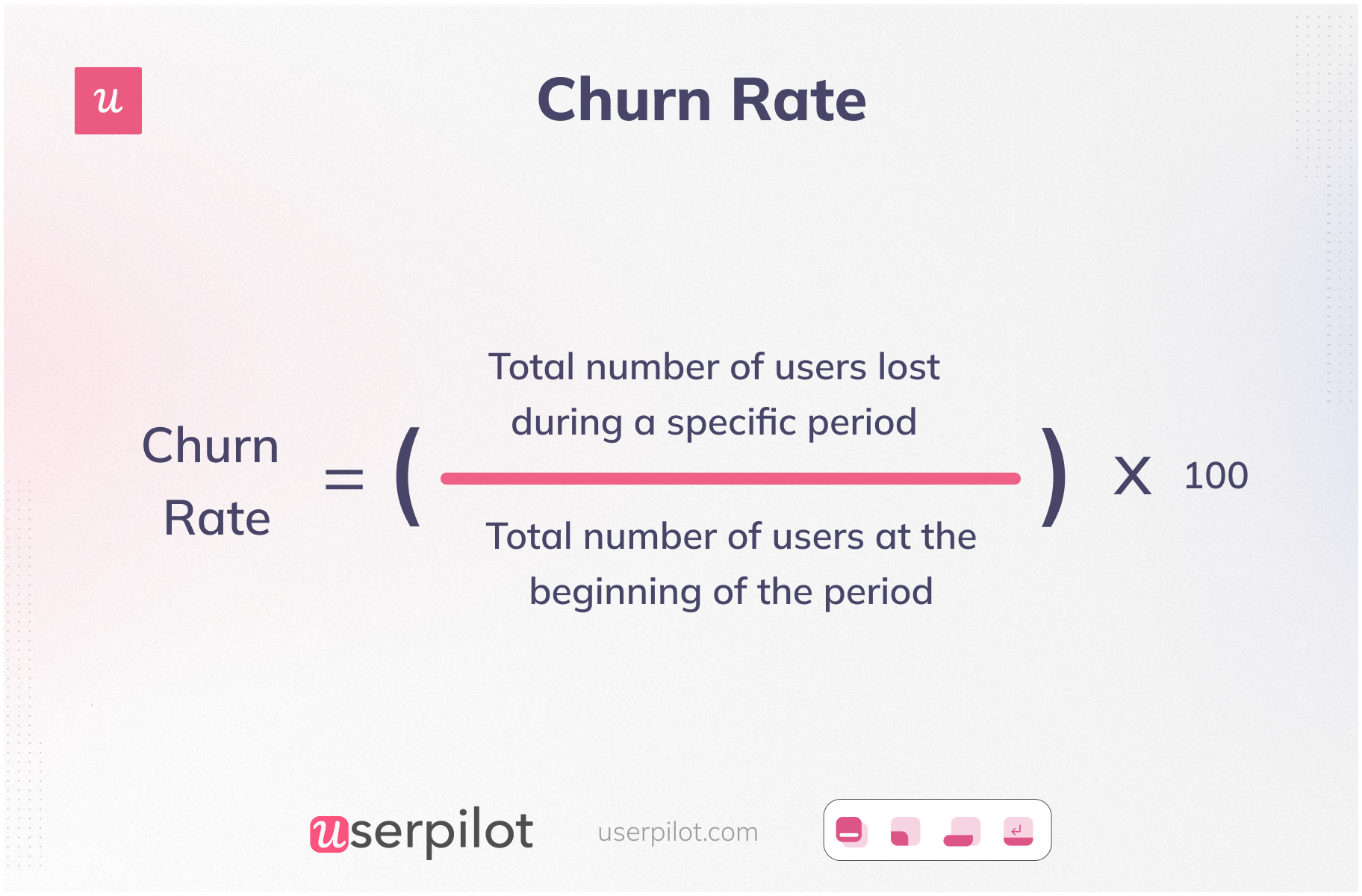
Customer Churn Rate (%) = (# paid users lost during time period / # paid users at start of time period) x 100
Customer lifetime value (LTV)
This is another metric we’ve already talked about. It’s critically important because it shows:
- If your marketing activities are unviable (when CAC exceeds LTV)
- What the potential profitability of your business might be
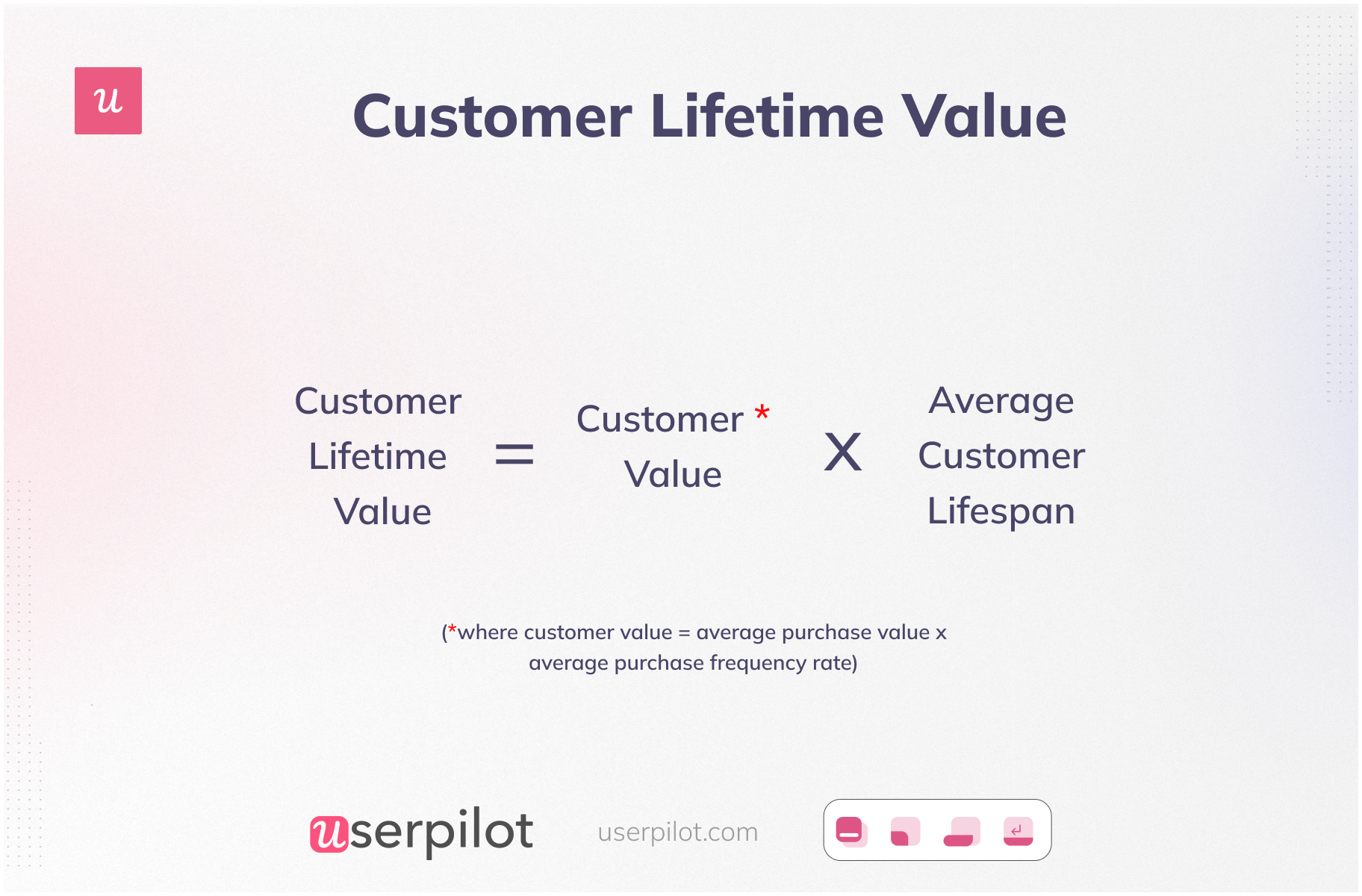
Life Time Value = Average Revenue Per User (ARPU) / Churn Rate
Customer health score
Customer health score – or customer engagement score – is a more complex metric than those we’ve looked at so far.
It aims to provide a measure of how engaged a customer is with your product (how “healthy” a customer is) by applying a weighting to various actions and operations carried out in your app within a certain time frame, and adding them all together.
The higher a customer’s health score, the less likely they should be to churn – because the weightings you apply will be geared towards highlighting actions that generate value and progress users along the customer journey.
By keeping track of customer health scores (usually by segment or cohort), you can get a sense of how to make sure your users realize the value and stick around for a long time.
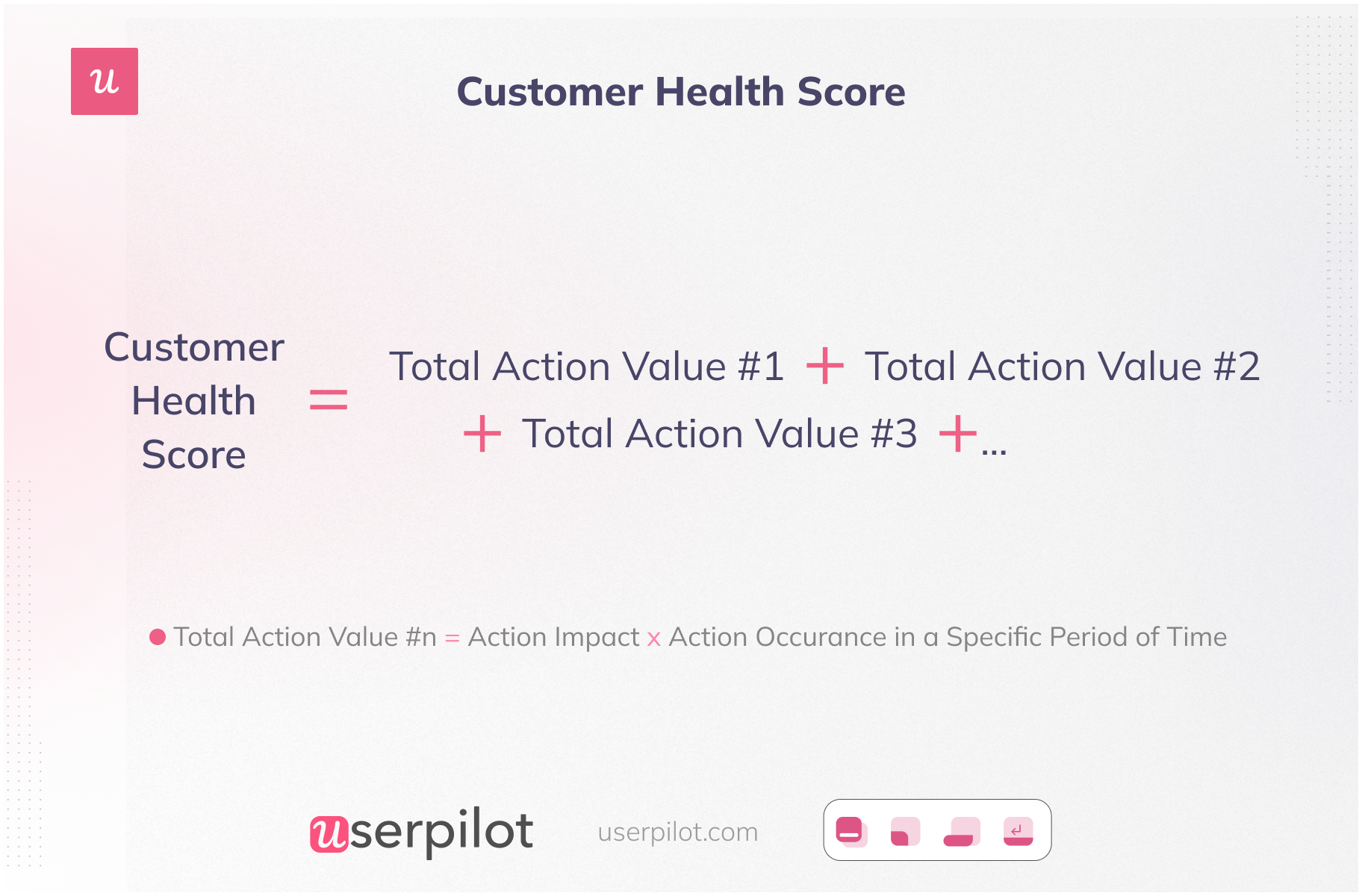
Customer Health Score = Total Action Value 1 +Total Action Value 2 + Total Action Value 3 + etc
Where Total Action Value = Action Impact (weighting) x Action Frequency within time period.
Monthly recurring revenue (MRR) and Annual recurring revenue metrics
MRR is the amount of revenue you can expect to earn from all your active customers per month. Accordingly, annual recurring revenue (ARR) is calculated annually.

MRR = ARPU x # of accounts in a month
MRR is one of the key customer success metrics for SaaS businesses because it helps you estimate future cash flows and the overall profitability of your SaaS business.
Moreover, calculating MRR also helps you calculate MRR churn, which is another metric that measures how much revenue you lost and the overall effect of losing that amount. The lower the MRR churn, the more opportunities for rapid growth.
11 SaaS retention strategies
In this section, we’ll outline customer retention strategies that should definitely play a part in your efforts to improve customer retention.
Personalize customer onboarding process to exceed customer expectations
Identifying your customers’ Jobs to Be Done (JTBD) helps you understand their expectations and tailor the onboarding to their specific needs. As a result, customers will be more likely to stay and continue using your product.
When collecting JTBD data, avoid burdening users with too many questions or you risk creating signup friction. Stick to the data required to provide a personalized customer onboarding experience.
Here is how Notion uses a simple survey that asks the key questions so they can understand the users’s JTBD.

Use the JTBD data you collected and build a branched onboarding experience that guides users through the key features for their use case.
With this approach, you’ll reduce the time to value and increase product adoption—both factors contribute to high retention rates.
Notion takes branched onboarding a notch higher, delivering onboarding flows based on individual user accounts or team accounts:

If you select the team option, you’ll then be prompted to start with projects because that’s a major use case for teams using Notion:

Similarly, users who click the individual account option are taken to a page more suitable for their needs.
![]()
Personalize customer onboarding with Userpilot

Use gamification for increasing customer retention
Gamified experience provides the dopamine rush that encourages users to explore your product.
Adding gamification to your checklists is a good way to ensure users stay long enough to tick every item on the list. Do this by attaching progress bars to your checklists. Users will be more driven to complete their tasks when they see how far they’ve come and how many steps are left.
Also, it’s a good idea to add the time it takes to complete a task under each task. Your users will know what to expect and won’t easily give up on tasks.

Your checklist items play a crucial role. Don’t select randomly—focus on 3-5 key tasks that are relevant to that specific user and will bring them to the Aha! Moment quickly.
Use secondary onboarding to retain customers
Primary onboarding is the process of getting new users to the point where they get value from your app (Activation). Secondary onboarding is all about upskilling current customers so that they get more and more value over time.
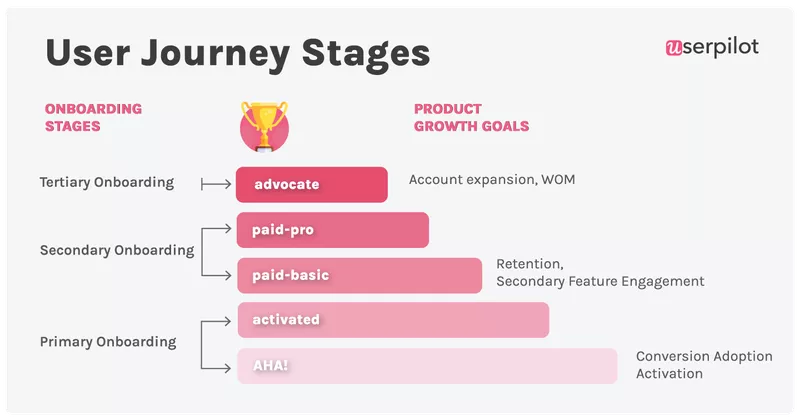
Onboarding users progressively is an important part of providing a good customer experience.
In the bad old days of SaaS, new users would be forced to sit through comprehensive Product Tours, demonstrating every facet of an app, before they were able to start using it.
That’s not only annoying, but it’s also counter-productive.
By showing everything an app can do to a user who has no idea how to get started, Product Tours slow down Time To First Value.
Clever product managers, therefore, break onboarding down into “need to know” chunks and provide it as and when it’s needed.
This can be done reactively (in a resource that a user can refer to when they’re ready) or proactively (by tracking behavioral cues in-app and triggering contextual experiences).
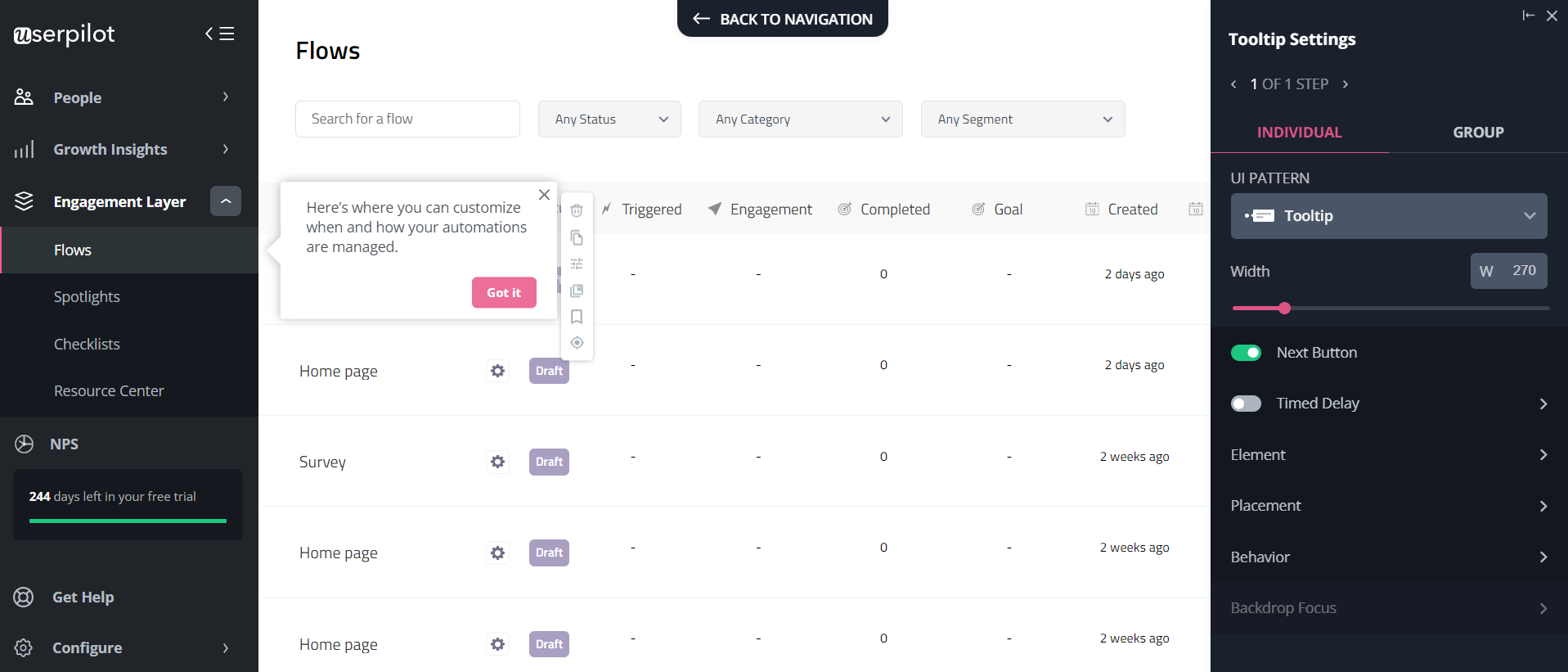
In-app messaging is extremely powerful for secondary onboarding, as it allows you to solve problems it looks like they’re experiencing and to point them to features and solutions that are likely to benefit them.
Collect user feedback with customer satisfaction surveys and improve customer experience
Collect and analyze satisfaction data through the CSAT survey triggered at different points in the user journey.
Using this data to make targeted improvements in areas that affect satisfaction can directly impact customer retention rates.
How to roll out CSAT surveys customers actually respond to?
First, ensure your questions are clear enough. Make it easy for users to respond by clicking on emoticons, numbers, or symbols that represent their feelings.
More importantly, trigger your CSAT surveys contextually. For example, the best time to survey users about your support team is immediately after they finish contacting support, not days after.
Userpilot has customizable CSAT survey templates to save you time:

Offer valuable upsells to an existing customer contextually
Don’t miss opportunities to upsell and cross-sell to your existing users.
Once again, this is best done in-app – when a user’s actions indicate a need for something else you have to offer.
If your product is usage-based, adding an upgrade button when the user approaches the account limits is a great way to be contextual and remove upgrade friction.

Offer trials of premium features
Use in-app modals to alert a user if it looks like they’re trying to use a premium feature they don’t have access to. Offer a time-limited free trial to get them hooked on it!
This is a great way to convert freemium accounts into paying customers and increase retention but also to showcase the value of upgrading to a higher account that gives the user access to additional features.
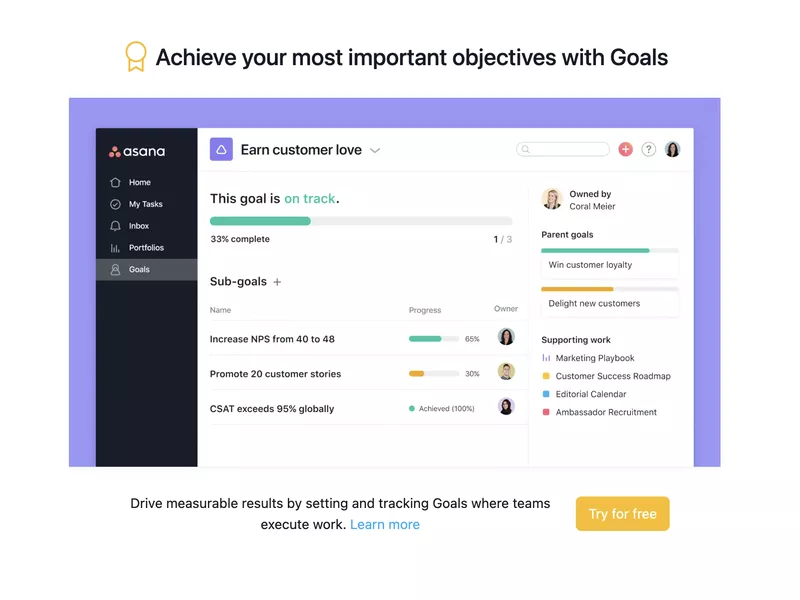
Increase customer retention rates by offering new features
Regularly inform your existing customers about new features or updates in your product.
By showcasing the value of these additions and how they can benefit current users, you encourage continued engagement with relevant features, which leads to retaining customers for longer. The customer lifetime value rises as a result, boosting your revenue.
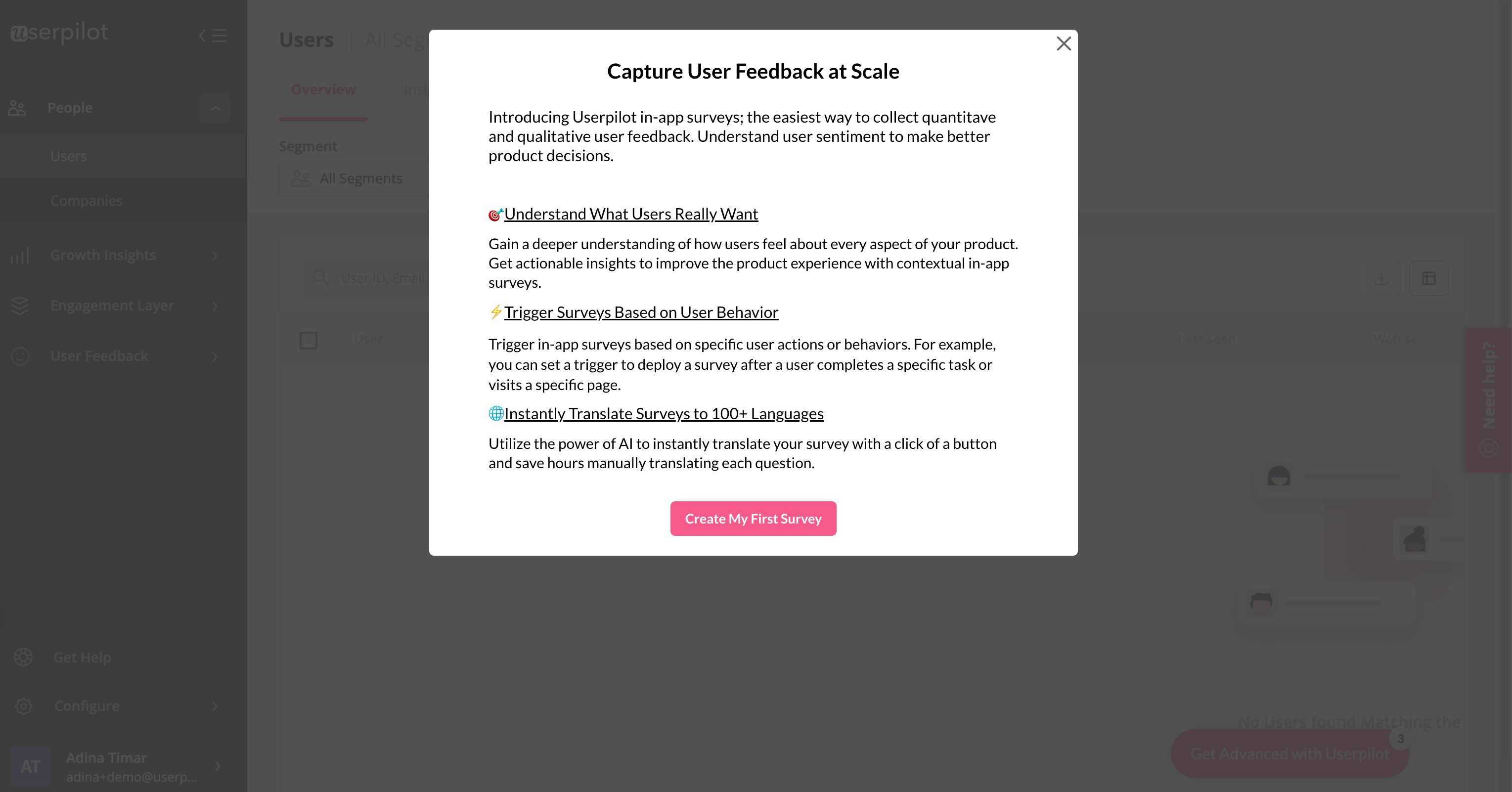
Use funnel analysis to understand friction across the customer journey
Employing funnel analysis helps pinpoint where users drop off or face challenges within the user journey.
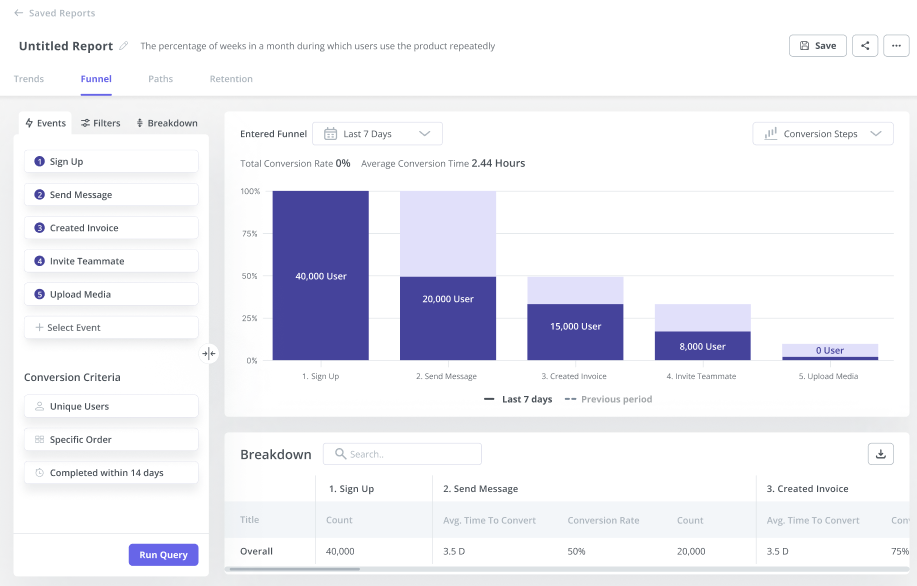
Pair funnel analysis with other analytics data to really understand what’s going on. Once you have sufficient insight, launch in-app help guides to address friction and provide smoother user experiences.
A/B test different in-app messages and make data-driven decisions
When it comes to making improvements to your product, don’t just follow your gut. Follow the data.
Use A/B testing to put different variants of new features, UIs, or workflows to the test. Then deploy the version that gets the best results!
This should be hard-baked into your whole approach to product development.
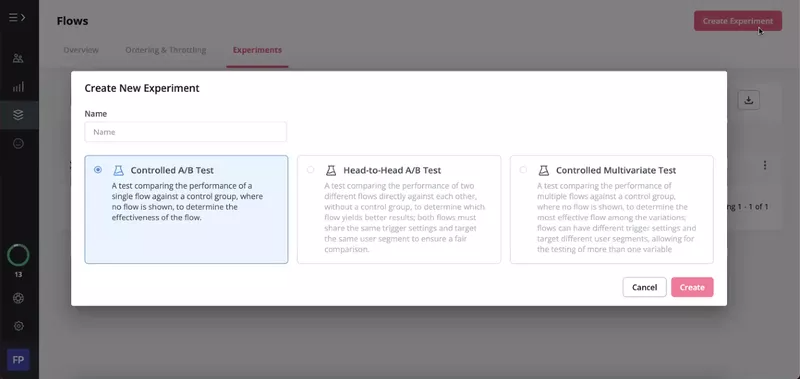
Want to start testing different in-app experience flows to improve retention? Get a Userpilot demo and run A/B tests with one click.
So, for example, when you add a new onboarding experience, test two versions against matching customer segments.
This will ensure you are not implementing suboptimal improvements when you could have given more value to more customers with a slight change.
Monitor customer retention rates with a cohort table
Cohort retention analysis is the process of tracking user engagement with the product over time. However, instead of looking at the user population as a whole, it looks at specific user groups linked to specific events or timeframes.
Use cohort retention analysis to evaluate their strategies and analyze long-term user behavior trends to improve customer retention. It is also useful for predicting future revenue.
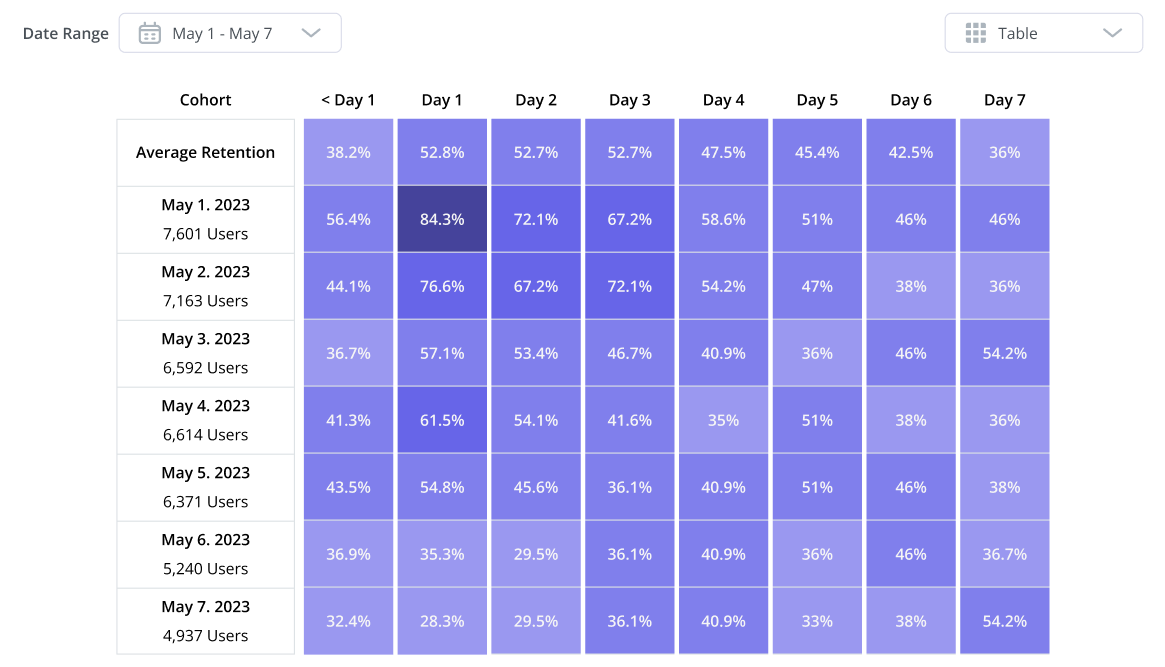
Reduce customer churn with exit surveys
Exit surveys have two parts to play in your customer retention formula.
- They help you get a sense of the difficulties experienced by unhappy users, which increases your company’s ability to address them in the future.
- They give you a final opportunity to encourage customers to change their minds and stay!
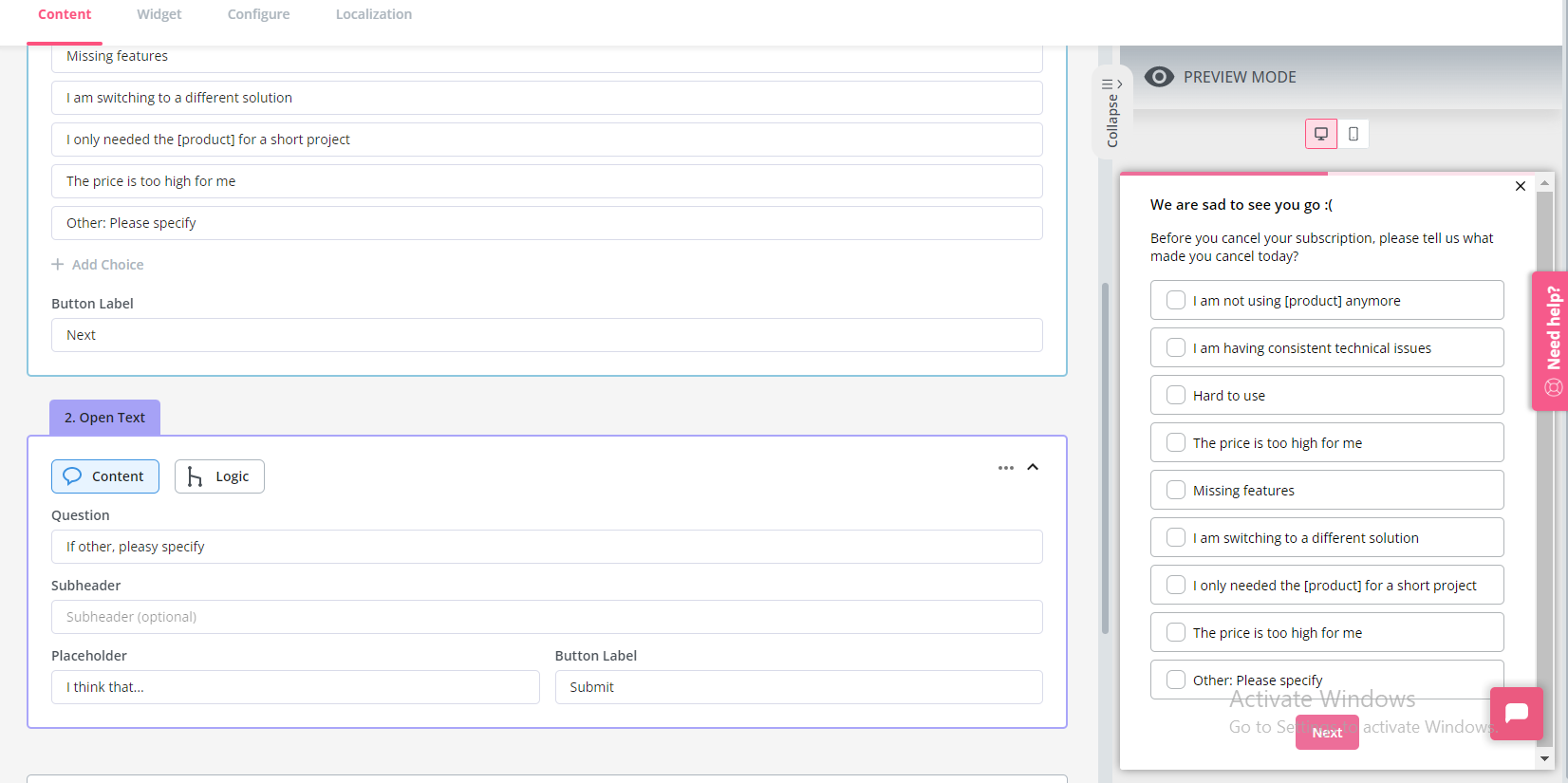
In the past, these were often sent out by email – but today’s SaaS companies are seeing significant advantages from putting them in-app:
- Completion rates are much higher, which means you get better data. Once somebody has decided to cancel and shut down your app for the last time, they’re far less likely to offer you feedback than if you ask them during the cancellation flow.
- As well as getting more responses, you’ll get more authentic responses – because the feedback will be immediate rather than retrospective.
- You can offer incentives to stay or alternatives to cancellation before the workflow is completed.
![]()
Create in-app surveys code-free with Userpilot

Customer retention strategy examples in practice
If you do all of these things, then your customer success team will crush churn rates and your retention program will be a rip-snorting success!
But don’t just take our word for it. Take a look at how these SaaS companies have been increasing customer retention with them.
Customer retention strategy example #1 – Kommunicate in-app checklists

Source: Kommunicate.io
Kommunicate had a problem. Outgoing customers were asking for a feature that already existed, but that they hadn’t been able to find.
So, they implemented in-app checklists to drive users to adopt that feature – and then provided secondary onboarding through interactive walkthroughs to get customers to use other features as well.
The result: 86% of Kommunicate users completed the chat widget customization goal.
That led to a 3% uplift in feature usage.
‘It’s a substantial increase for us as well – even if it’s just 5% increase – it then translates into a 2-3% increase in revenue, which has a substantial impact on our MRR’, said Parth Shrivastava.
Customer retention strategy example #2 – Miro in-app guides
Making the most of the online whiteboard collaboration tool Miro is not simple.
But they’ve done a great job in providing loads of in-app training and support resources, including:
- Behavioral triggers that launch contextual in-app experiences
- A wide variety of different training resources, including tutorials, webinars, and complete courses
- Integration of live customer support functionality into the resource center widget

Source: Miro
This way, Miro is catering to the needs of many different customer segments and user preferences in one, consistent, easily-accessed location.
Customer retention strategy example #3 – Kontentino in-app gamification
The best examples of customer retention programs don’t have to be as comprehensive as Miro’s.
Social media management tool Kontentino used Userpilot to gamify aspects of their primary onboarding – resulting in a 10% uplift in new customer activation within one month.
When a customer successfully links their first account to the app, they are rewarded with this funny and personal GIF. Little things like this can go a long way!

Source: Kontentino.com
How to retain existing customers with Userpilot
Customer retention helps you reduce acquisition costs and drive expansion over time. Userpilot makes it easy to analyze retention using funnel reports, trend reports, and built-in goal tracking that can be filtered by segment/company/time period to provide actionable insights.
Here are the Userpilot features you can use to analyze user retention:
- Funnels: Funnel reports show you the number of users who enter a funnel versus the percentage who complete it. Using Userpilot’s funnel reports to track activation points and adoption goals can help identify the stages where users drop off so you can patch these leaks.
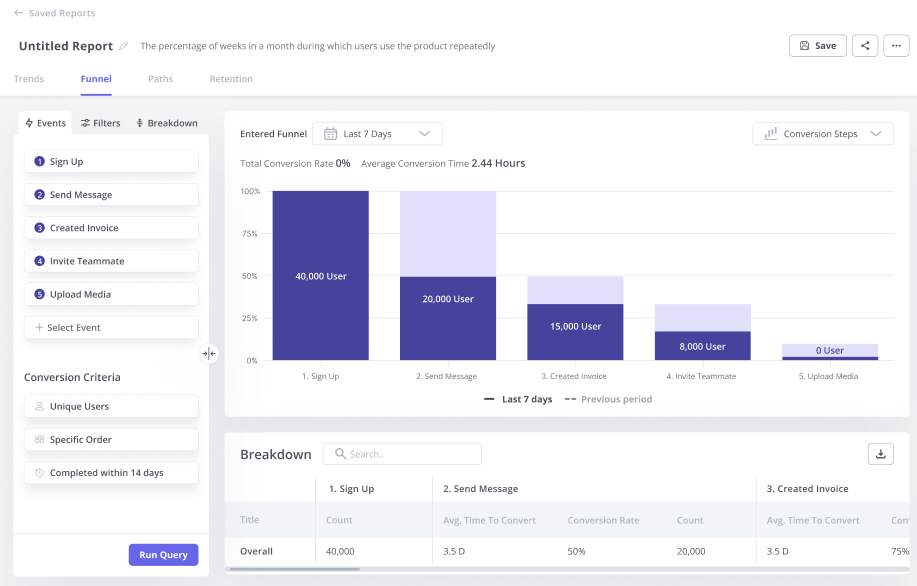
- Trends: Trend reports let you see how specific product changes impact retention metrics and monitor changes in active user counts over certain time periods. You can also create custom metrics, track events, or use the breakdown tab to perform a correlative retention analysis.
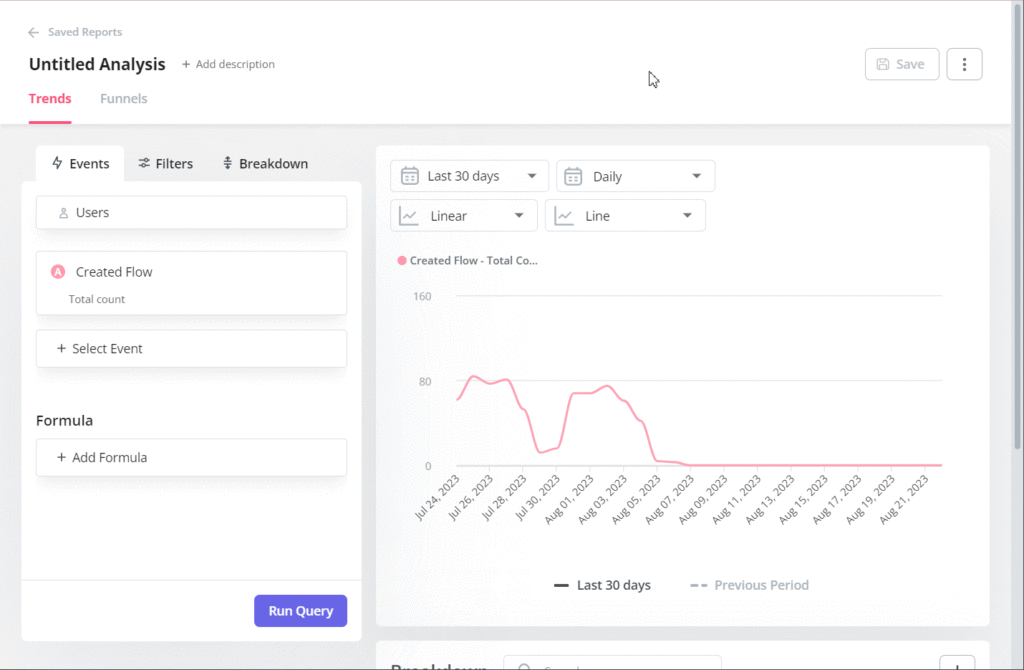
- Cohort analysis: Analyze retention trends using cohort tables. This functionality will be available in Q4 of 2023.
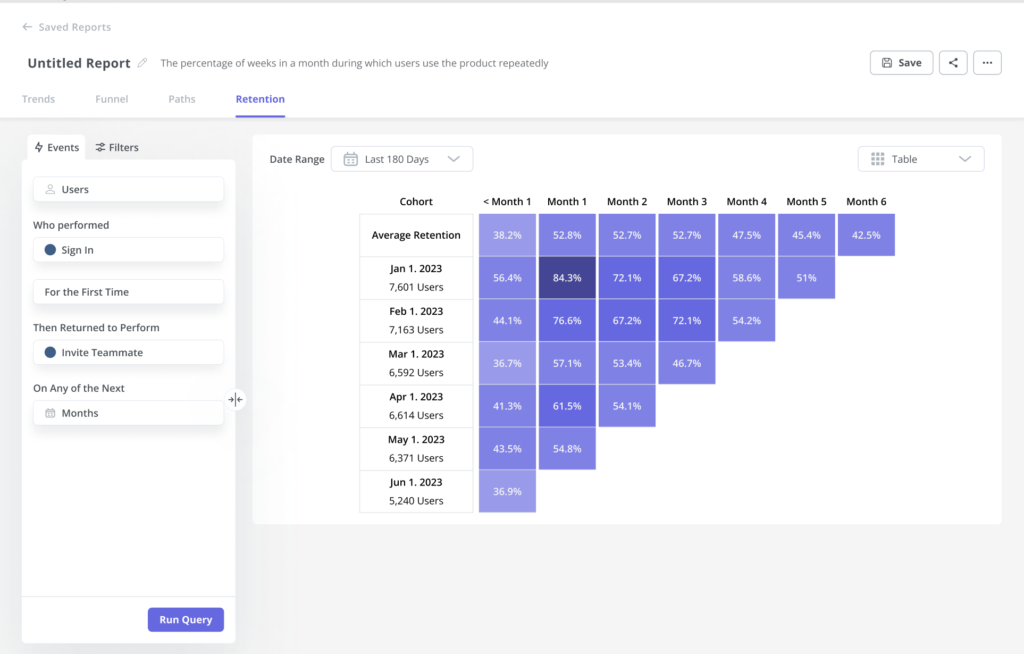
Besides analyzing SaaS customer retention, you can implement in-app surveys to collect customer feedback, use segmentation to personalize user journeys and use in-app customer retention strategies to improve loyalty.
Conclusion
If your SaaS business is based on a subscription model, then you need to care about not just how many new customers you win, but also how the number of customers you keep – and how much money those customers spend.
That means you need to care about SaaS customer retention.
As we’ve shown in this article, there are loads of different metrics, goals, strategies, tactics, and tools SaaS companies can use to ensure that their products and services are sticky, engaging, and provide long-term value to existing customers.
If you’re looking to improve customer retention with in-app messaging tactics as we described here, get a Userpilot demo and get started.
Try Userpilot and Take Your Retention to the Next Level


